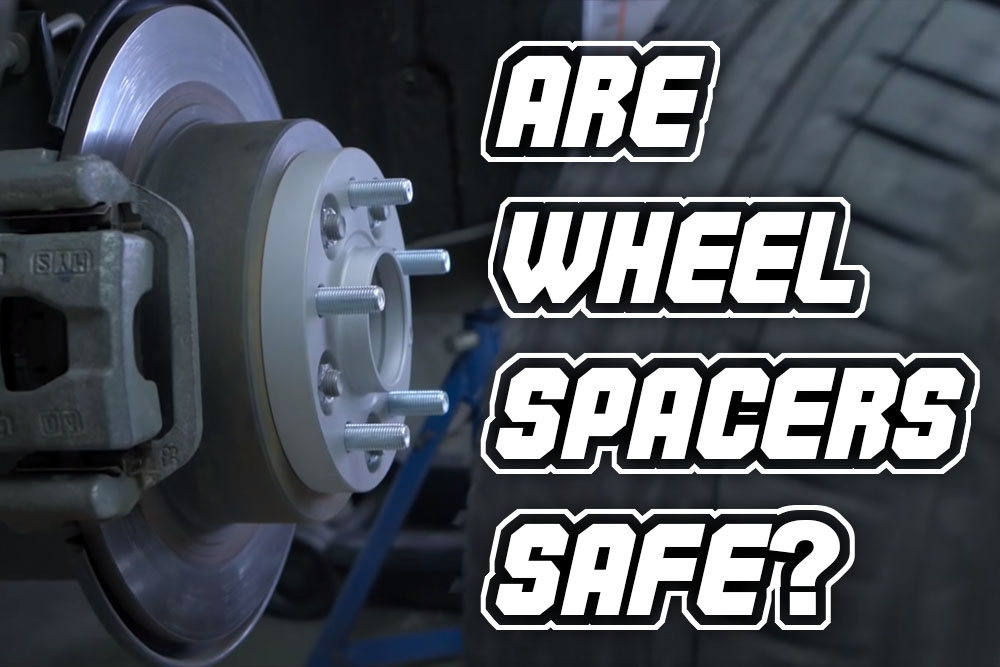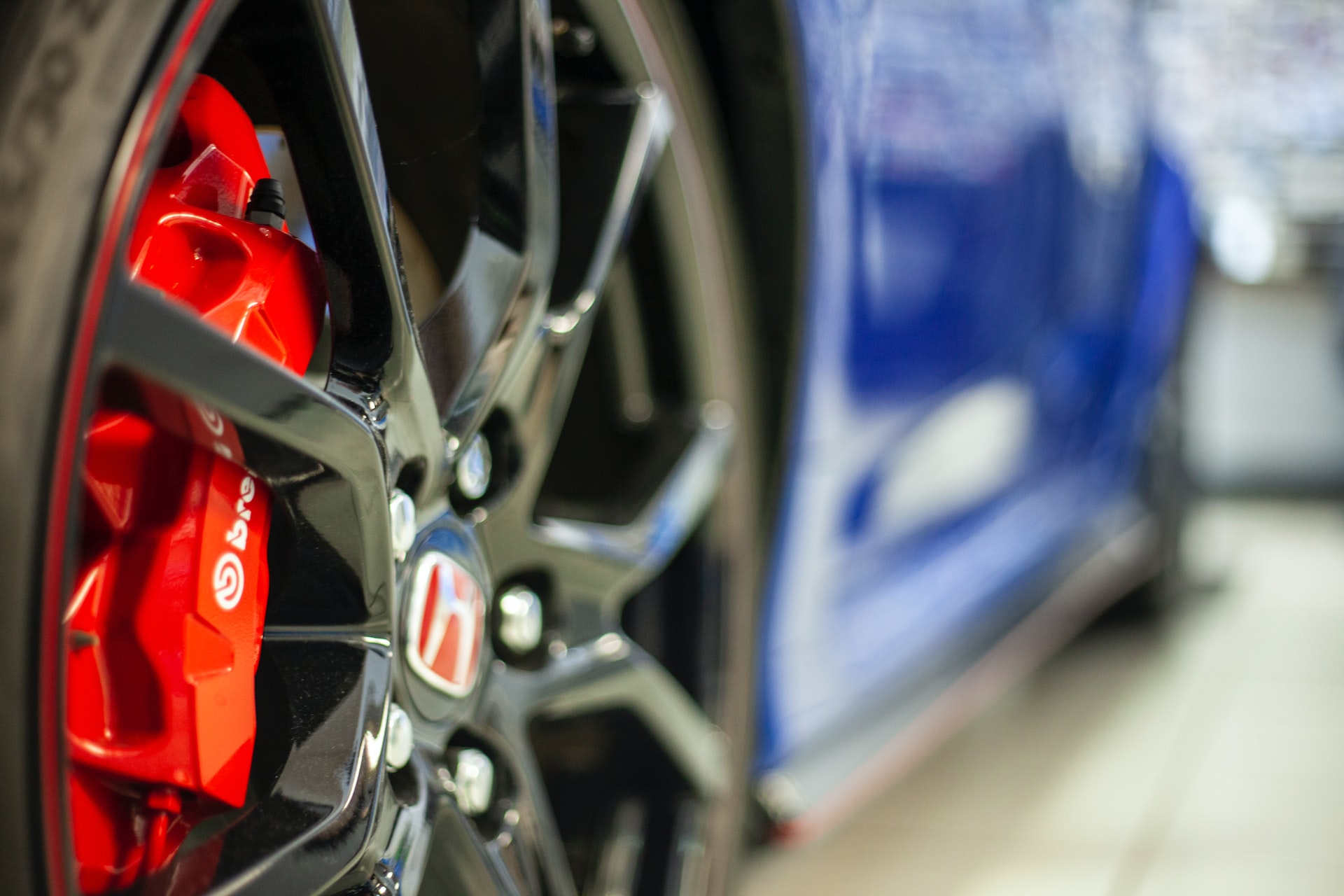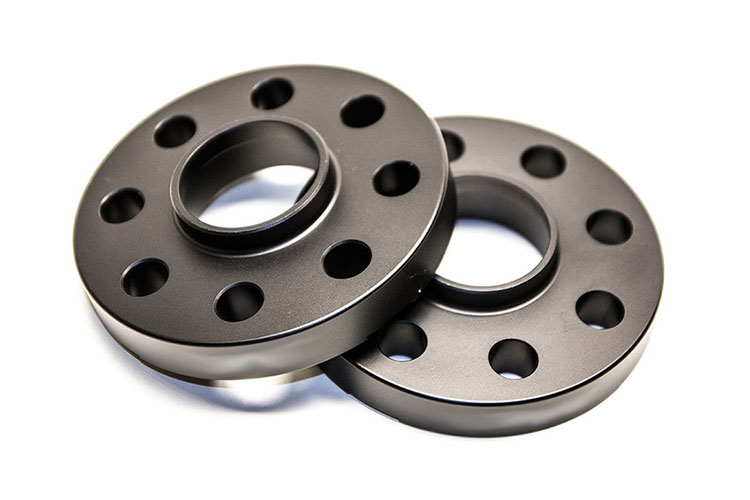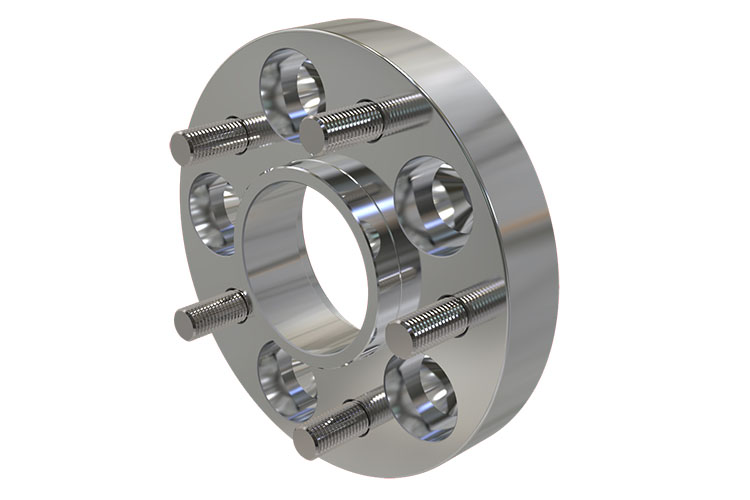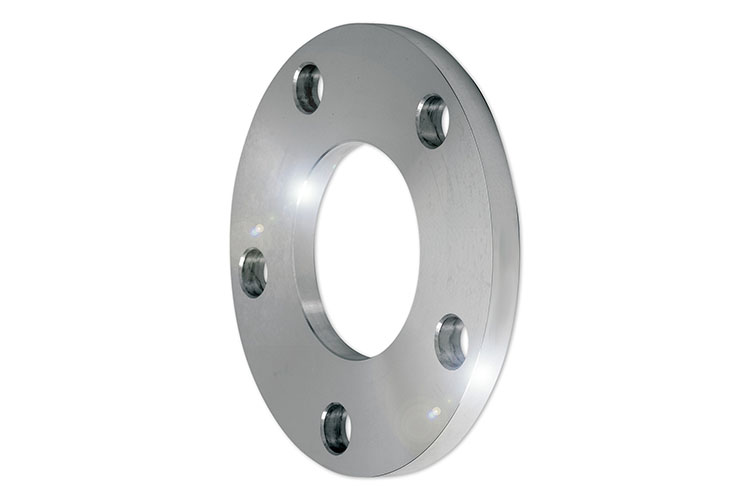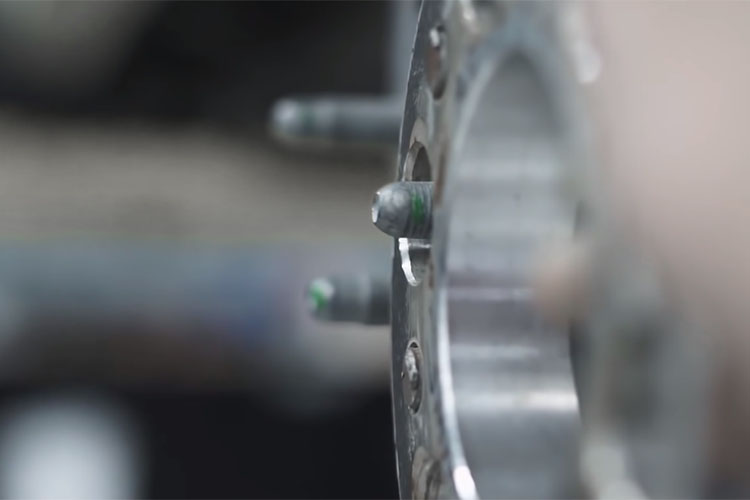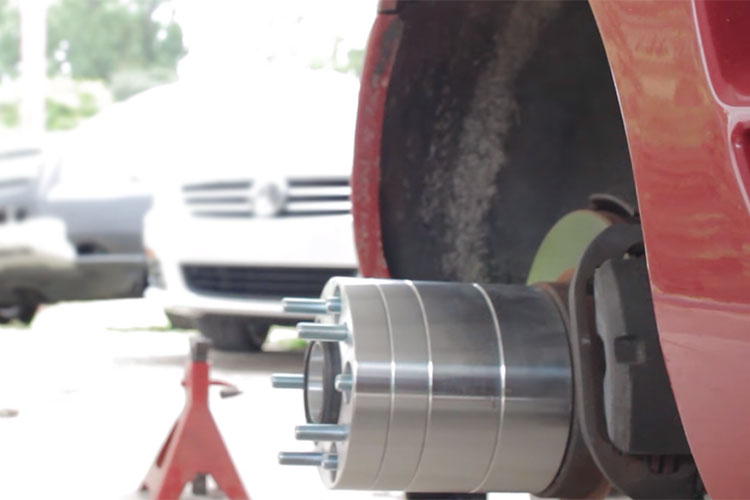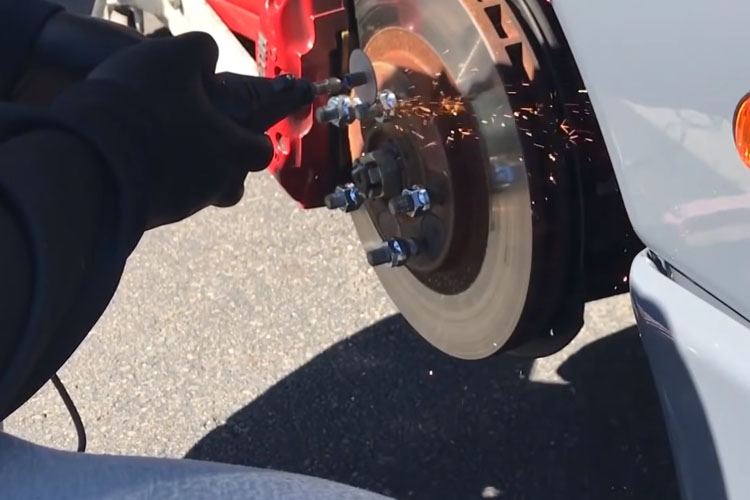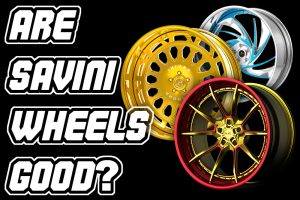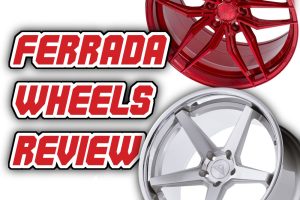Are Wheel Spacers Safe? Everything You Need to Know About Spacers & Adapters
There are few topics in the car world that are as debated as wheel spacers.
Bring up wheel spacers on a car forum or at a meet and you will be met with strong comments both for and against using them, along with a bunch of name calling and “told-you-so’s”.
Are wheel spacers really that bad? If they are so unsafe, why are so many people running them?
In the post, I’m going to give you everything you need to know about wheel spacers and answer whether they are actually safe or not.
What Are Wheel Spacers and How Do They Work?
A wheel spacer are essentially a metal disc that is fitted between your wheel and the hub, in order to push the wheel outwards and make it sit further out in relation to the car’s body and suspension.
By mounting on the hub, they essentially move the hub mounting surface outward, so that the wheel mounts further out.
There are several different types of wheel spacers, and there are also adapters, but they all do the same job.
What Are the Benefits Of Installing Wheel Spacers?
There are a number of reasons why someone would want to install wheel spacers on their car.
Wheel Fitment
One of the biggest reasons people install spacers is to get the wheel fitment right without having to spend money to buy new wheels and tyres.
Often times wheels don’t sit quite right, whether it’s the OEM wheels or aftermarket wheels that didn’t come in the perfect size for the car.
In this case, you can install wheel spacers, which are relatively cheap compared to a set of wheels, to get them to sit exactly as you want and give the car a more aggressive look.
Clear Big Brakes
Another common reason for installing spacers is to clear brakes. If you have installed a big brake kit on your car, you may find that your wheels no longer clear the calipers.
Similarly, your car may already have big brakes, and your new wheels are just a few millimeters short of clearing the calipers.
In these cases, a small spacer can be used to give you enough clearance to the fit the wheels.
Wider Track
Wheel spacers will also widen the track of the car which can lead to more grip in the corners and better handling.
By widening the track, you reduce lateral load transfer, which means the load on the tyres is more even around corners, giving you more grip.
Realistically, the affects will be small if we are talking 10-20mm of spacer, but if you are chasing milliseconds at the track, this may be all you need.
Do Wheel Spacers Help With Rubbing?
Yes, if the rubbing is on the inside of the tyre, spacers can help with rubbing. By pushing the wheel and tyre out, wheel spacers can prevent rubbing on suspension components and the wheel well when turning.
However, they can also push the wheel out and case rubbing on the body, so you have to be careful you are not pushing the wheels out too far.
Do Spacers Affect Wheel Alignment?
No, wheel spacers do not affect the alignment. The simply push the wheels straight out, but do not change how they sit in relation to the rest of the car (unless you really messed something up on the installation).
The Cons of Wheel Spacers
While wheel spacers can bring a range of benefits, they can also come with some downsides.
Wheel Spacers Can Be Bad For Bearings
One of the biggest downsides of spacers is that they can causing wheel bearings to fail earlier.
By pushing the mounting point outwards, you are increasing the amount of load on the bearing which will cause it to wear out faster.
Realistically, however, unless you are running some extremely large spacers, this is going to be negligible and you won’t really notice it.
Additional Wheel Weight
One point that most people don’t consider is the fact that a wheel spacers adds to the weight of the wheel.
If you are seeking performance, wheel weight is a major factor in both speed and handling. Adding more weight to the wheels is only going to slow you down.
Now, wheel spacers typically don’t weigh that much, but when it comes to wheel weight, every lb or kg does make a difference, so keep that in mind.
Another Potential Point Of Failure
One other potential downside to keep in mind is that with every extra part you introduce, it’s one more thing that could fail.
If you get good quality spacers and install them correctly, the chances of failure are far lower, but it is still something to take into consideration.
Do Wheel Spacers Affect Performance and Handling?
Yes, wheel spacers do have an effect on performance and handling.
The biggest effect that wheels spacers have is on the handling on the car. By pushing the wheels out, they change the suspension geometry, particularly the scrub radius and king pin offset, which causes the car to have different handling characteristics.
This can help to increase grip, but it can also cause a loss of steering feel under hard braking, as well as making steering harder, so there are pros and cons.
Also, as I mentioned earlier, they add more weight to the wheel, which is a negative both for performance and for handling responsiveness, so that is something to consider as well.
Different Types Of Wheel Spacers
In order to answer whether wheel spacers are safe, we first need to cover the different types of wheel spacers, as this is one of the most important factors.
Slip-On Spacers
Slip-on spacers are the cheapest and most common type of spacer. These spacers are basically just the spacer with holes for the studs or bolts to go through.
They are installed by “slipping” them behind the wheel either onto the studs or behind the wheel and putting the bolts through the wheel and spacer.
Depending on the size, you may have to use longer studs or bolts, as they have to be long enough to go through the wheel and spacer and still have enough thread to adequately bolt down.
Bolt On Spacers/Adapters
Bolt-on spacers, also known as adapters (you’ll see why in a sec), feature a set of holes for the factory studs or bolts, and then a second set of holes or their own studs that the wheel bolts too.
This design allows for the second PCD on the wheel spacer itself to be different to what the car has, allowing you to run wheels with a different PCD than your car. Thus the name adapter.
These spacers generally allow you to run wider sizes than with a slip-on spacers, but they don’t come in thinner sizes, typically under 20mm, because it would be impossible to fit them while adequately bolting them down to the hub and leaving enough room for the second set of bolts or studs.
Hubcentric / Non-Hubcentric (Lug Centric)
Another factor when it comes to the type of wheel spacer is whether or not it is hubcentric.
Hubcentric, much like with wheels, means that the spacer’s hub bore matches the size of the car’s hub, so that the spacer sits firmly against the hub and take the load. They also have a hub lip of their own for the wheels to sit against. This ensures that everything is central and the bolts/studs are not being relied on to support the load, which can cause issues.
This is a hubcentric spacer. Notice the lip around the center bore:
Non-hubcentric spacers, otherwise known as lugcentric spacers, don’t have a matching hub bore, and don’t have a lip for the wheel’s hub bore to sit on, so the wheel bolts or studs have to support the load of the car. This can cause problems such as vibrations, wobbles and bolts loosening or even breaking, and is generally not a good idea, except for very thin spacers. I will discuss this more further down.
This is a lug centric spacer. Notice the lack of a lip around the center bore:
Both slip-on and bolt on spacers come in both hubcentric and non-hubcentric variations.
What Makes A Good or Bad Wheel Spacer?
By far the biggest thing that dictates the quality of a wheel spacer is the material it is made from.
Cheap spacers use weak metal which can break, crack or warp under heat, resulting in a failure and the wheel either getting seized to the spacer and hub, or falling off unexpectedly.
This is the reason many people thing spacers are “dangerous”.
A good quality spacer, made from forged 6061-T6 aluminium, with strong studs typically 10.9 or higher tensile, is very unlikely to have these issues and fail.
Whether they are hubcentric or not plays a big part in this too, and my advice is to stay away from non-hubcentric wheel spacers. I will explain why in the next section.
So, Are Wheel Spacers & Adapters Actually Safe?
It really depends on the wheel spacer, how it is installed and how it is being used that dictates the answer to this question.
Wheel spacers can be safe, if everything is done correctly, but they can also be dangerous if low quality parts are used or they are installed incorrectly.
Let’s go into a bit more detail so I can explain.
Are Bolt On Wheel Spacers Safe?
Yes, bolt-on wheel spacers are safe, as long as they are a quality part and have been installed correctly.
With bolt-on spacers, you have to make sure that they are made from a quality material, including the studs, so that they won’t break on you.
If your car had factory studs, you need to make sure that the studs don’t stick out past the spacer’s face, otherwise your wheel won’t bolt onto it properly and will eventually work its way loose (unless there are pockets on the mounting face with enough space for the stud that sticks out).
If your car has factory bolts, as many European models do, you need to ensure that the bolts that bolt the spacer to the hub don’t stick out (some spacers come with their own properly sized bolts), and that the spacer is made from a strong material, otherwise the threads could strip out and your wheels will fall off.
It’s also a good idea to regularly check all the bolts every time you take the wheel off to ensure they are not coming loose. This is especially important if you are doing track days or hard driving. Some people like to use Loctite, some don’t, that’s really a personal preference thing.
As long as all these things are in order, you should have no problems with bolt-on spacers.
Are Slip On Wheel Spacers Safe?
Yes, slip-on spacers are safe as long as they are a quality material and the bolts or studs are long enough to properly engage the threads.
The length of the bolt or stud is usually the biggest consideration you need to make when using slip-on spacers.
You want to have at least 6.5 turns on the nut or bolt to ensure it has enough thread to bite onto.
If you don’t, you need to use longer bolts or get longer studs, otherwise you risk the nuts or bolts either breaking or coming loose and your wheels falling off.
As long as the slip-on spacers are good quality and your studs or bolts are long enough, they will generally be fine.
Are Hub Centric Wheel Spacers Safe?
Yes, hub centric wheel spacers are safe. If you are getting wheel spacers, I would always recommend getting hub centric spacers. Here’s why.
The wheels on a car are designed to sit against the hub, which takes the load. The wheel studs or bolts are only designed to clamp the wheel to the hub, not to actually support the load.
If you get spacers which are not hub centric, you are putting all the load onto the studs or bolts, on top of the fact that you are adding extra load to the whole thing by pushing the wheels out. This is just a recipe for disaster.
Hub centric wheel spacers act like a factory wheel would, supporting the load correctly through the hub as the car was designed. This minimizes the chances of anything going wrong and your wheels falling off.
Are Lug Centric (Non Hubcentric) Wheel Spacers Safe?
While I wouldn’t specifically say they are unsafe, I don’t think they are a generally a good idea, for the reasons I stated above.
Wheels on a car are designed to take the load through the hub, not the wheel bolts or studs. When you use lug centric spacers, you are eliminating that feature and putting all the load on the wheel bolts or studs, which increases the chances of the bolts or studs failing.
Very small lug centric spacers, say up to 5mm are typically not a problem because the wheel still have some of the factory hub to sit on. But once they go beyond that, it’s usually not a good idea.
Now, have people used lug centric spacers without problems? Yes.
Do you want to be the guy who risks it and who’s wheel comes flying off? I wouldn’t.
Are Aluminum Wheel Spacers Safe?
Yes, aluminium wheel spacers are safe, but it depends on how they are made.
You typically want to look for forged 6061 T6 aluminum spacers as these are strong enough to do the job.
If they are made from cheap, soft aluminium, or god forbid, cast aluminum, you can pretty much bet that they are going to fail at some point.
Are Wheel Spacers Safe For Wide Body Kits?
Yes, wheel spacers are safe for wide body kits, as long as you are using quality spacers and have installed them correctly.
Now, something to consider with widebody kits is how wide do you need to go.
Wheel spacers can help you get a few extra millimeters of width, but once you start going past around the 30mm mark, you are increasing the chances of running into problems.
The larger the spacer, the more load you are putting on your suspension components as well as the wheel and spacer itself, the bigger the chance that something fails.
It’s always a better idea to get wheels in the correct size, especially if the widebody is significantly wider than stock.
Are Wheel Spacers Safe For Daily Driving?
Yes, wheel spacers are safe for daily driving, as long as you have installed quality spacers and they are installed correctly.
Are Wheel Spacers Safe for Racing?
Yes, wheel spacers are safe for racing, as long as you have used good quality spacers and they are installed correctly.
Many professional racers have used spacers on their race cars, which proves the fact that they are able to handle the stress and load of racing.
Just make sure to double check all the bolts to ensure they are torqued correctly, and keep any eye on things to make sure there are no failures.
Are Wheel Spacers Safe For Towing?
The answer to this really depends on the size of the spacers, the quality, if they were installed correctly and how big the load is.
Towing a heavy load is going to place additional stress on your vehicle, and spacers are one of the weak points that are going to be first to give way.
People have towed with spacers without issue, but it would generally be a good idea to take them off to be safe, especially if you are towing heavy loads regularly.
Are Wheels Spacers Safe for Off-Roading?
Like most things with spacers, they can be safe for off-roading as long as you are using quality spacers that have been installed correctly, and you aren’t running some insane size.
Off-roading does add extra forces to the wheels, hubs and suspension components, so take that into consideration when deciding whether to go off-roading with wheel spacers or not.
Can You Stack Wheel Spacers?
No, it is not a good idea to stack wheel spacers.
While people have done it and got away with it, doing this adds extreme load that the spacers were not designed to handle, and increases the odds that something will break such as bolts or studs.
Will Wheel Spacers Cause My Wheel Studs to Bend?
No, wheel spacers will not cause wheel studs to bend. The only way that wheel spacers could cause studs to bend is if they were not installed correctly, which resulted in load being applied in a manner that should not have happened and bent a stud. This is typically an installation error rather than a part error, unless the spacer failed.
Are Wheel Spacers Bad or Dangerous?
No, wheel spacers are not bad or dangerous, unless they are cheap, low quality parts or have been installed incorrectly.
A good quality spacer that has been installed correctly is no more dangerous than a normal wheel.
Do Wheel Spacers Cause Problems?
Good quality wheel spacers typically do not cause any problems. It could be argued over time that they cause wheel bearings to wear out faster, but unless you are using some abnormally large spacers this is not enough to be noticeable.
Are Wheel Spacers Legal?
The legality of wheel spacers will change depending on where you live.
Most countries on the planet generally don’t have an issue with wheel spacers unless they have been installed in an unsafe manner.
In the US, wheel spacers are legal and can be used without issue. In the UK they are also legal.
In places that require TUV such as Germany and Austria, the spacers need to be TUV approved in order to pass the inspection.
In Australia, wheel spacers are NOT legal unless they were fitted by the manufacturer.
In New Zealand, wheel spacers are only legal if they have been certified by the LVVTA for that particular car, and meet the required criteria on size and type.
Always check your local laws to ensure you won’t have any issues if you are looking at installing wheel spacers.
How to Install Wheel Spacers
Wheel spacer installation is typically no harder than installing a set of wheels. However, there are instances where you may need to modify your car in order for them to fit correctly.
Slip-on wheel spacers just sit behind the wheel and use the same studs or bolts as the wheel does.
Bolt-on wheel spacers got bolted to the hub first, and then you bolt the wheel to the spacer.
You want to make sure you have 6.5 turns on all the nuts/bolts when bolting on spacers, including the spacer bolts on bolt-on spacers. This ensures that the bolts/nuts can adequately tighten down and won’t come loose or break.
If your wheel studs are too long and stuck out from your bolt-on spacers, you may need to trim the car’s studs to be flush with the mounting face of the spacer.
Who Can Install Wheel Spacers?
If you can install wheels, you should be able to install wheel spacers. Most of the time wheel spacers are just a bolt-on job, so you shouldn’t need any special tools or knowledge to install them, unless you need to trim your wheel studs.
Alternatively, any wheel and tire shop or general mechanic should be able to install wheel spacers for you.
Conclusion – Are Wheel Spacers a Good Idea?
Wheel spacers can be a great low cost solution for getting the last few millimeters you need to widen your car’s track and get the perfect fitment.
As long as you buy good quality spacers that are hub centric and you installed correctly, they will be just as safe as a regular wheel.
Just remember to check on them regularly, and in the case of bolt-on spacers, make sure the bolts or nuts that mount the spacers to the hubs are tight.
If you are looking to buy wheel spacers, you can get them here:
GET WHEEL SPACERS HERE FOR THE BEST PRICE
- BC Racing BR Series VS Tein Flex Z Coilovers - April 15, 2024
- The Pros and Cons of Shock Body Vs Spring Perch Coilover Height Adjustment - April 13, 2024
- Monotube Vs Twin Tube Shocks: The Ultimate Guide - April 11, 2024

